Related Research Articles

A string orchestra is an orchestra consisting solely of a string section made up of the bowed strings used in Western Classical music. The instruments of such an orchestra are most often the following: the violin, which is divided into first and second violin players, the viola, the cello, and usually, but not always, the double bass.
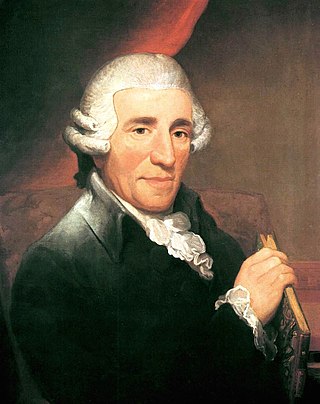
Joseph Haydn's Symphony No. 13 in D major was written in 1763 for the orchestra of Haydn's patron, Prince Nikolaus Esterházy, in Eisenstadt.

The Symphony No. 94 in G major is the second of the twelve London symphonies written by Joseph Haydn. It is popularly known as the Surprise Symphony.

The Symphony No. 36 in C major, K. 425, also known as the Linz Symphony, was written by Wolfgang Amadeus Mozart during a stopover in the Austrian town of Linz on his and his wife's way back home to Vienna from Salzburg in late 1783. The entire symphony was written in four days to accommodate the local count's announcement, upon hearing of the Mozarts' arrival in Linz, of a concert. The première in Linz took place on 4 November 1783. The composition was also premièred in Vienna on 1 April 1784. The autograph score of the "Linz Symphony" was not preserved, but a set of parts sold by Mozart to the Fürstenberg court at Donaueschingen in 1786 does survive.
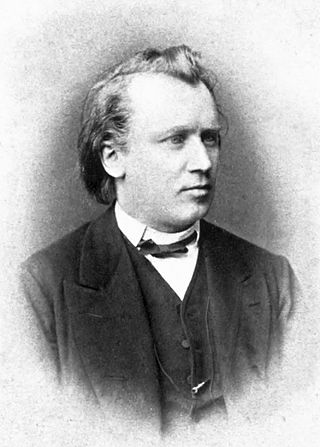
Symphony No. 2 in D major, Op. 73, was composed by Johannes Brahms in the summer of 1877, during a visit to Pörtschach am Wörthersee, a town in the Austrian province of Carinthia. Its composition was brief in comparison with the 21 years it took Brahms to complete his First Symphony.
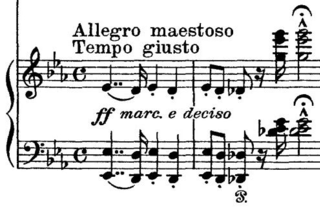
Franz Liszt composed his Piano Concerto No. 1 in E♭ major, S.124 over a 26-year period; the main themes date from 1830, while the final version is dated 1849. The concerto consists of four movements and lasts approximately 20 minutes. It premiered in Weimar on February 17, 1855, with Liszt at the piano and Hector Berlioz conducting.

The Symphony No. 100 in G major, Hoboken I/100, is the eighth of the twelve London symphonies written by Joseph Haydn and completed in 1793 or 1794. It is popularly known as the Military Symphony.
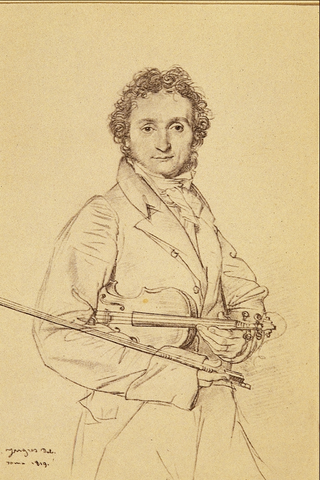
The Violin Concerto No. 1, Op. 6, was composed by Niccolò Paganini and dates from the mid-to-late 1810s. It was premiered in Naples, Italy on the 31st of March 1819.

The String Octet in E-flat major, Op. 20, MWV R 20, was written by the 16-year-old Felix Mendelssohn during the fall of 1825 and completed on October 15. Written for four violins, two violas, and two cellos, this work created a new chamber music genre. Conrad Wilson summarizes much of its reception ever since: "Its youthful verve, brilliance and perfection make it one of the miracles of nineteenth-century music." This was one of the first works of Mendelssohn to be very well received.

Symphony No. 67 in F major, Hoboken I/67, is a symphony by Joseph Haydn. It was composed by 1779. The Haydn scholar H. C. Robbins Landon calls this work "one of the most boldly original symphonies of this period."
An organ concerto is an orchestral piece of music in which a pipe organ soloist is accompanied by an an orchestra, although some works exist with the name "concerto" which are for organ alone.
The Symphony No. 3 in C major of the Swedish composer Franz Berwald, nicknamed the Singulière, was written in 1845. It is scored for 2 flutes, 2 oboes, 2 clarinets, 2 bassoons, 4 horns, 2 trumpets, 3 trombones, timpani and strings. It is about a half-hour in length and is in three movements:
- Allegro fuocoso in C major
- Adagio - Scherzo - Adagio
- Finale: Presto in C minor

The Symphony No. 2 by the British composer Michael Tippett was completed in 1957.
The Third Symphony by Alfred Schnittke was his fourth composition in the symphonic form, completed in 1981.
Felix Mendelssohn wrote thirteen string symphonies between 1821 and 1823, when he was between 12 and 14 years old.. These symphonies were tributes to Classical symphonies especially by Joseph Haydn, Johann Christian Bach, Carl Philipp Emanuel Bach, and Wolfgang Amadeus Mozart.
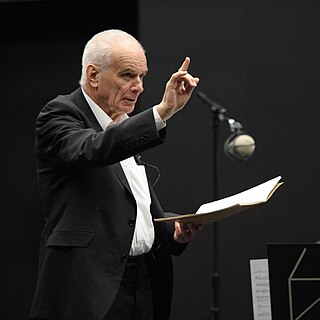
The Symphony No. 1 by Peter Maxwell Davies was composed between 1973 and 1976, and is dedicated to Sir William Glock, "as a mark of friendship and of appreciation of his work for contemporary music in his years as music controller at the B.B.C.". It was commissioned by the Philharmonia Orchestra, which gave the premiere of the symphony at the Royal Festival Hall, London, on 2 February 1978, with Simon Rattle conducting.
Symphony No. 2 is a symphony in three connected movements for orchestra by the American composer Christopher Rouse. The piece was commissioned by the Houston Symphony and completed July 15, 1994. The work premiered later that year and is dedicated to then Houston Symphony director Christoph Eschenbach.
Symphony No. 6 by Russian composer Alfred Schnittke was composed in 1992. It was commissioned by cellist and conductor Mstislav Rostropovich and the National Symphony Orchestra of Washington, who together gave its first performance in Moscow on 25 September 1993.

The Symphony No. 2 is a four-movement orchestral composition by the Finnish composer Uuno Klami, who wrote the piece from in 1945; it is the final of Klami's two numbered symphonies. Toivo Haapanen and the Helsinki Philharmonic Orchestra premiered the work at the Helsinki Conservatory on 15 December 1946.